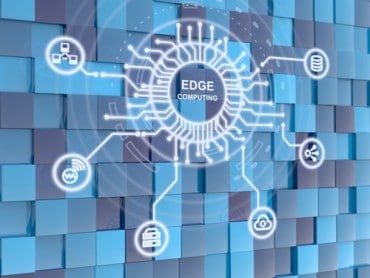
The people-centric internet has created incalculable innovation and societal change. Expect nothing less from the Internet’s next machine-centric chapter.
Today’s Internet was built for humans – tomorrow’s will be made for machines. This change in end-user will alter everything about how networks are built and spur a massive shift in investment and innovation to the “edge,” i.e., edge computing.
Fueled by an intensifying boom in mobility, edge computing has been filling a growing need for a quicker, nimbler, and decidedly more decentralized data processing and computing paradigm. And much as Moore’s Law has demonstrated repeatedly across technologies, the exponential gains in edge computing that are about to come will make those of our 2021 smartphone and Amazon-filled lives seem quaint by comparison.
See also: What Does Kubernetes Have to Do with Edge Computing?
To put this in perspective, let’s first consider how pervasive the Internet of Things will be and the monumental scale of its data needs. A single smart factory, “a highly digitized shop floor that continuously collects and shares data through connected machines, devices, and production systems,” churns through 5 petabytes (Pb) of data per day to make real-time decisions. And the number of smart factories is growing precipitously.
A 1-million-person smart city, which uses technology across every aspect of its operations to improve outcomes…and connect citizens, businesses, and non-profits in new ways consumes 200 Pb per day as it deploys IoT devices to control traffic, waste collection, parking, energy efficiency, and infrastructure monitoring, according to Deloitte. Research firm MarketsandMarkets forecasts 14.8% annual growth in smart city investment, envisioning an $820 billion global market in 2025.
And, finally, a single autonomous vehicle requires four terabytes (Tb) of information per day to operate. Other megatrends on the cusp of hatching include augmented and virtual reality (AR/VR) and cloud gaming, all of which add to the massive volume of data needed at the edge. On top of this, our individual habits continue to create more data – from increased reliance on Amazon to streaming content for work, education, and entertainment – placing more primacy on content delivery networks and infrastructure than ever before.
Only, there’s a critical problem.
The way today’s Internet was designed and built requires most data to be transported long distances to centralized data centers. More importantly, it is forecasted that by 2025 – in just four short years – there will be 12x more data produced than current Internet bandwidth has the capacity to transport.
Clearly, our centralized model of big “C” computing is going to have to evolve – and quickly. Beyond capacity constraints, other drivers of decentralization of IT infrastructure include:
- Cost – Even if it were possible to backhaul most of the world’s data to centralized data centers, it still wouldn’t be cost-effective.
- Latency – Many cutting-edge applications, such as IoT, AR/VR, and autonomous vehicles, require latency and jitter that are not possible with existing centralized computing architecture. Put another way, do you want your left turn in Boston, in traffic, to hinge on data being sent to and from Kansas?
- 5G – While 4G didn’t drive wholesale infrastructure change, 5G will. Many 5G edge use cases require latency and connection density beyond what is currently available from wireless providers. 5G supports 10x the number of devices per square kilometer and decreasing tower-to-device latency by 10x (from 10 milliseconds to <1 millisecond!).
- Regulatory – There is a growing focus on “data residency” or “data localization” obligations mandating data must be stored, and in some cases processed, in a specific geography. These regulations will increasingly drive demand for distributed, local data storage.
On the Edge of an enormous growth opportunity
Meeting the needs of edge computing at scale is going to take massive investment and innovation. And it will be worth it, with early indicators projecting Edge market revenue growth will resemble that of the cloud over its first ten years of development, eclipsing $100 billion by 2028. (Source: Cowen.)
So where is that money going to go? And where is innovation most needed? The Edge is not one place, performing one function. The Edge covers a range of hybrid architectures where storage and compute functions are performed at various points between the centralized cloud and the end-user device.
Significant changes are going to be required at every level of the internet architecture to enable edge computing, with network and hyperscale cloud providers both having an important role to play. To date, hyperscale and OTT providers have taken the lion’s share of the cloud and content markets, directly targeting end-users and bypassing carriers in the process.
5G and Edge pose the risk of further disintermediation. However, latency requirements of edge applications make the physical location of compute critical, which will increase carriers’ leverage. For the most part, carriers control interconnection, perhaps the most critical piece of the ecosystem, and therefore will drive the pace of deployment. The rate of Edge adoption is still in question, but the magnitude of required infrastructure investment is clear:
- Edge Data Centers – The build out of edge data centers to provide the compute needs for latency-sensitive/jitter-sensitive applications is going to be intense. Cowen forecasts a 40x increase in the number of data centers by 2028. Given the importance of location, Edge data centers will be a distinct asset class but will also be a significant growth segment for existing data center companies looking to provide hybrid core-edge architectures.
- Wireless Infrastructure – Millions of new distributed antenna systems (DAS) and small cell networks (“smalls”) will be required to serve carriers and support IoT and machine-to-machine (M2M) use cases.
- Wired Infrastructure – Enabling the edge will also necessitate re-architecting the “middle mile,” requiring significant upgrades to regional networks. Extending network peering out from the core and increased network densification across all markets will be necessary to serve an increasingly distributed wireless and data center infrastructure.
Virtually every layer of the network beyond the physical layer will also need to be re-architected. Legacy protocols based on least cost routing with limited network intelligence and no local break-out functionality will need to be replaced. With the growth of edge computing, software-defined networks will proliferate, as will a new generation of IoT applications.
And let’s not forget all the IT and communications services that will manage this evolutionary and revolutionary transformation. Edge computing will drive the next wave of migration, implementation, and managed services for infrastructure and applications across network/compute locations and multiple clouds.
Managed network services will be needed to manage compute, cloud interconnect, and quality of service/latency guarantees, as well as the rollout of private wireless networks, to support IoT fleets with on-premises edge data centers. In addition, think of all the jobs, software, and services that will be created to secure edge data and perform analytics on it.
The people-centric internet of the last three decades has created incalculable wealth, innovation, opportunity, and societal change. Expect nothing less from the Internet’s next machine-centric chapter.




























